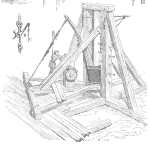
Originally published in the ASQC Reliability Review, Vol. 15, No. 3, Sept. 1995 pp. 23-25
This article shows reductio ad absurdum in action. Yes you can achieve any MTBF you want, by mixing products with Weibull life distributions, but you won’t want the consequences. The article also shows the absurdity of specifying MTBF, alone.
[Read more…]












